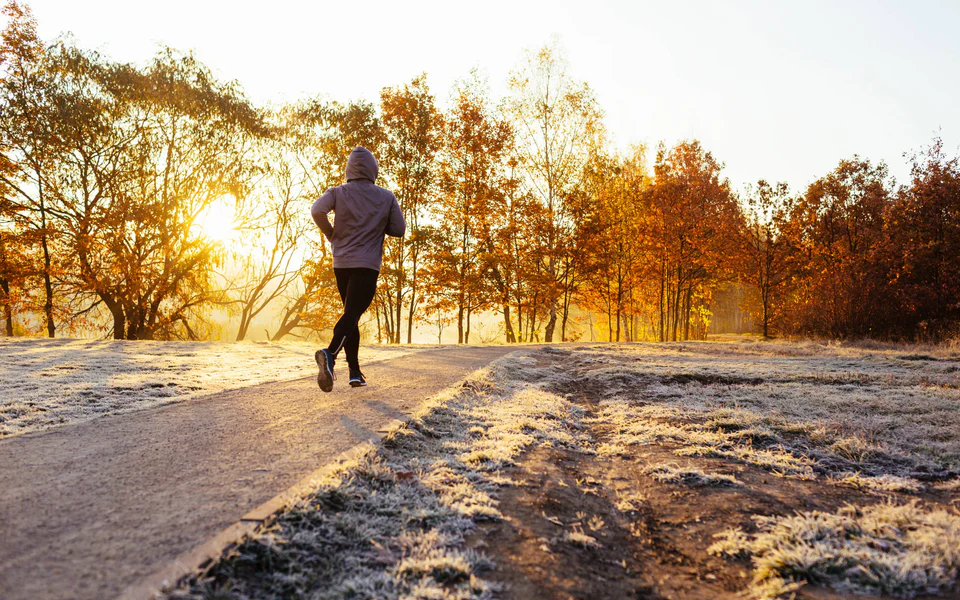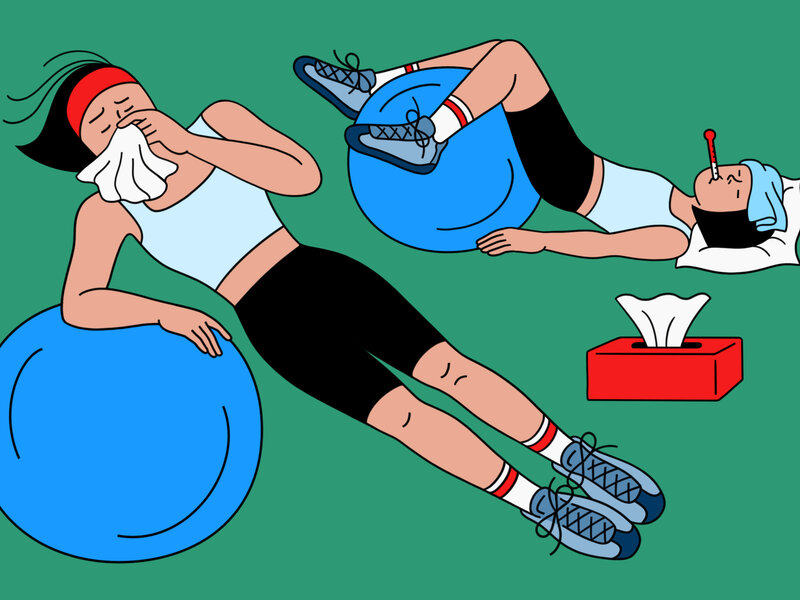Walking in cold weather presents unique challenges, but it also offers significant health benefits that can enhance both physical and mental well-being. Many people struggle to stay active during the winter months due to concerns about safety, motivation, and proper gear. This article provides essential tips on choosing the right clothing and equipment, ensuring safety while walking in winter conditions, maintaining motivation, and understanding the health advantages of outdoor activity during colder months. By following these guidelines, you can embrace winter walking and enjoy its numerous benefits.
: A warm hat is essential for retaining body heat, as a significant amount of warmth is lost through the head. Opt for a beanie or a hat that covers your ears, made from insulating materials.
- Gloves or Mittens: Protect your hands with insulated gloves or mittens. Mittens tend to be warmer as they allow your fingers to share heat, but gloves provide better dexterity. Look for waterproof options if you expect wet conditions.
- Scarves or Neck Gaiters: A scarf or neck gaiter can protect your neck and face from biting winds. Choose materials that are soft against the skin and provide warmth without bulk.
In this article you will find:
Visibility and Safety Gear
Cold weather often comes with shorter daylight hours, making visibility a critical concern. Incorporate safety gear into your walking routine:
- Reflective Clothing: Wear bright or reflective clothing to ensure you’re visible to others, especially in low-light conditions. Look for jackets or vests with built-in reflective strips.
- Headlamps or Flashlights: If you plan to walk in the early morning or evening, consider carrying a headlamp or flashlight. This not only illuminates your path but also increases your visibility to others.
- Safety Whistle: Carry a safety whistle in case of emergencies. It’s a lightweight and practical addition to your gear.
Choosing the right gear for cold weather walking is essential for an enjoyable experience. By layering effectively, selecting appropriate footwear, and incorporating essential accessories, you can embrace the chill and make the most of your outdoor walks. For more insights on winter gear, check out this comprehensive guide on winter hiking gear.
Safety Tips for Walking in Winter Conditions
Walking during winter can be a delightful way to enjoy the beauty of the season, but it also comes with its own set of challenges. Ensuring your safety while navigating icy paths and cold temperatures is paramount. Here are essential safety tips to help you stay secure and comfortable while walking in winter conditions.
Assess Weather Conditions
Before heading out, it’s crucial to assess the weather conditions. Understanding what to expect can significantly influence your safety:
- Check the Forecast: Always look at the latest weather reports to be informed about temperature, wind chill, and precipitation. Apps like The Weather Channel can provide real-time updates.
- Avoid Extreme Conditions: If severe weather warnings are in effect, consider postponing your walk. High winds, heavy snow, or freezing rain can create hazardous walking conditions.
Choose Safe Walking Routes
The route you select can greatly impact your safety during winter walks. Opt for paths that minimize risks:
- Stick to Well-Lit Areas: Choose routes that are well-lit and frequently used. This not only enhances visibility but also makes it easier to spot potential hazards.
- Avoid Icy Spots: Be mindful of areas that are prone to ice formation, such as shaded sidewalks, bridges, and steps. If possible, stick to routes that are regularly cleared of snow and ice.
Maintain Balance and Stability
Keeping your balance while walking on slippery surfaces is crucial to prevent falls:
- Wear Appropriate Footwear: As previously mentioned, insulated and slip-resistant boots are essential. Look for shoes with good traction to help grip icy surfaces.
- Take Shorter Steps: When walking on slick surfaces, take shorter, more deliberate steps. This helps maintain your center of gravity and reduces the risk of slipping.
- Use Walking Poles: Consider using walking poles for additional support and stability. They can help distribute weight and provide extra traction on uneven surfaces.
Stay Visible
Visibility is a significant concern during winter months when daylight hours are shorter. Ensure you are seen by others:
- Wear Bright Colors: Opt for bright or reflective clothing that stands out against the white snow. This will make you more visible to drivers and other pedestrians.
- Utilize Reflective Accessories: Consider adding reflective accessories such as vests, armbands, or even clip-on lights to enhance your visibility.
Stay Hydrated and Energized
Even in cold weather, staying hydrated is essential. Cold air can be dehydrating, and maintaining energy levels is crucial for your endurance:
- Drink Water: Carry a water bottle and take sips regularly, even if you don’t feel thirsty. Hydration helps keep your body functioning optimally.
- Snack Smart: Bring along energy-boosting snacks like nuts or energy bars. Eating small amounts can help maintain your energy levels during longer walks.
Know When to Turn Back
Listening to your body is vital. If you start to feel uncomfortable or unsafe, it’s essential to know when to call it a day:
- Watch for Signs of Hypothermia: Symptoms include shivering, confusion, and fatigue. If you experience these, seek warmth immediately.
- Be Mindful of Your Limits: If the cold becomes overwhelming or conditions worsen, don’t hesitate to turn back. Your safety should always come first.
By following these safety tips, you can enjoy the beauty of winter walking while minimizing risks. For more information on winter safety, consider visiting CDC Winter Weather Safety for comprehensive guidelines and resources.
Staying Motivated to Walk During Cold Months
As the temperatures drop and daylight hours shorten, maintaining motivation to walk can become a challenge. However, embracing the cold months with a positive mindset and effective strategies can help you stay active and energized. Here are some practical tips to keep your motivation high during winter walking.
Set Realistic Goals
Establishing achievable walking goals can provide you with a sense of purpose and direction. Consider the following:
- Daily Steps Goal: Aim for a specific number of steps each day. Using a pedometer or a fitness app can help track your progress and keep you accountable.
- Weekly Walking Schedule: Create a weekly walking plan that includes specific days and times for your walks. Consistency can help build a habit, making it easier to stay motivated.
Embrace the Winter Scenery
Winter offers a unique beauty that can enhance your walking experience. To enjoy the season:
- Explore New Routes: Discover local parks or trails that are particularly scenic in winter. The sight of snow-covered landscapes can make your walks more enjoyable and refreshing.
- Photography Opportunities: Bring your camera or smartphone to capture the beauty of winter. Taking photos can add an element of fun and creativity to your walks.
Incorporate Social Elements
Walking can be more enjoyable when shared with others. Consider these social strategies:
- Walking Buddy: Find a friend or family member to join you on your walks. Having a walking partner can boost motivation and make the experience more enjoyable.
- Join a Walking Group: Look for local walking clubs or community groups that meet regularly. Engaging with others who share your interest can provide support and encouragement.
Reward Yourself
Incentives can serve as powerful motivators. Implement a reward system to celebrate your achievements:
- Small Rewards: Treat yourself to a warm beverage or a cozy evening after reaching your walking goals for the week.
- Milestone Celebrations: Plan a special outing or activity after achieving significant milestones, such as completing a month of consistent walking.
Stay Warm and Comfortable
Comfort plays a significant role in your willingness to walk during cold months. Ensure you are adequately prepared:
- Dress in Layers: As discussed in previous sections, wearing appropriate clothing can make a substantial difference in your comfort level. Being warm will encourage you to spend more time outdoors.
- Plan for Warm-Up Activities: Incorporate dynamic stretches or light exercises before your walk to get your blood flowing and warm up your muscles.
Utilize Technology
Leverage technology to enhance your walking experience and keep you motivated:
- Fitness Apps: Use apps that track your walking progress and set challenges. Many apps allow you to connect with friends and compete in friendly competitions.
- Music and Podcasts: Create a playlist of your favorite songs or download engaging podcasts to listen to while you walk. This can make the experience more enjoyable and help pass the time.
Reflect on the Benefits
Remembering the benefits of walking can also help maintain your motivation. Regular walking in winter can:
- Boost Mood: Physical activity releases endorphins, which can help combat seasonal affective disorder (SAD) and improve overall mood.
- Enhance Health: Walking regularly can help maintain fitness levels, support cardiovascular health, and strengthen the immune system during cold months.
Staying motivated to walk during the cold months may require some extra effort, but the rewards are well worth it. For additional tips and community support, consider visiting Verywell Fit’s Winter Walking Tips to explore further strategies for staying active during winter.
Health Benefits of Cold Weather Walking
Walking in cold weather is often overlooked as a viable fitness option, but it offers numerous health benefits that can enhance both physical and mental well-being. Engaging in outdoor activities during the winter months not only helps maintain fitness levels but also provides unique advantages that can contribute to overall health. Here are some compelling health benefits of cold weather walking.
Boosts Cardiovascular Health
Walking is a low-impact aerobic exercise that can significantly improve cardiovascular health. Cold weather walking can enhance these benefits:
- Increased Heart Rate: The body works harder to maintain its core temperature in colder conditions, which can elevate your heart rate. This increased effort can lead to improved cardiovascular fitness over time.
- Improved Circulation: Regular walking helps improve blood circulation, which is essential for overall heart health. Cold weather can stimulate blood flow as your body adapts to the temperature.
Supports Weight Management
Maintaining a healthy weight can be challenging during the winter months when many people tend to be less active. Cold weather walking can help combat this tendency:
- Burns More Calories: Walking in colder temperatures can lead to a higher calorie burn compared to walking in milder conditions. Your body expends energy to keep warm, which can aid in weight management.
- Combats Holiday Weight Gain: With the holiday season often leading to increased caloric intake, walking can be an effective way to balance out those indulgences and maintain your weight.
Enhances Mental Well-Being
The mental health benefits of walking in cold weather are profound. Engaging in outdoor activities can have a positive impact on mood and overall mental clarity:
- Reduces Symptoms of Seasonal Affective Disorder (SAD): Exposure to natural light, even in winter, can help alleviate symptoms of SAD, a type of depression that occurs during the colder months. Walking outside can boost serotonin levels, which contribute to feelings of happiness.
- Improves Cognitive Function: Physical activity, including walking, has been shown to enhance cognitive function and memory. This can be particularly beneficial during winter when people may feel sluggish or less mentally sharp.
Strengthens the Immune System
Regular exercise, including walking, can bolster the immune system, which is especially important during the winter months when colds and flu are prevalent:
- Increased Immune Response: Moderate physical activity can enhance immune function by promoting good circulation and reducing inflammation, which helps the body fight off infections.
- Exposure to Fresh Air: Walking outdoors exposes you to fresh air and sunlight, both of which can have a positive effect on your immune health. Sunlight exposure also helps the body produce vitamin D, which is crucial for immune function.
Improves Joint Health and Flexibility
Cold weather walking can also have beneficial effects on joint health:
- Reduces Stiffness: Walking helps keep joints flexible and reduces stiffness, which can be particularly beneficial for those with arthritis or joint pain.
- Strengthens Muscles: Regular walking engages various muscle groups, which can help strengthen the muscles around joints, providing better support and reducing the risk of injury.
Encourages Social Connections
Walking during the colder months can also foster social connections, which are vital for mental health:
- Group Walks: Joining a walking group or inviting friends to walk with you can create a sense of community and accountability, making it easier to stick to your walking routine.
- Family Activities: Encourage family members to join you for winter walks. This not only promotes physical activity but also strengthens family bonds.
Incorporating cold weather walking into your routine can yield significant health benefits, making it an excellent choice for maintaining physical and mental well-being during the winter months. For more insights on the health benefits of walking, consider visiting Healthline’s guide on the benefits of walking.
Walking in cold weather offers numerous health benefits, including improved cardiovascular health, enhanced mental well-being, and better weight management. Cold temperatures can elevate your heart rate, leading to greater calorie burn and increased circulation. Additionally, exposure to natural light while walking outdoors can help alleviate symptoms of Seasonal Affective Disorder (SAD) and boost overall mood.
To stay safe and motivated during winter walks, wear appropriate gear such as insulated hats, gloves, and reflective clothing. Set realistic walking goals and explore new routes to keep your routine fresh. Remember to stay hydrated, maintain a balanced diet, and listen to your body to ensure a safe and enjoyable walking experience throughout the colder months.




